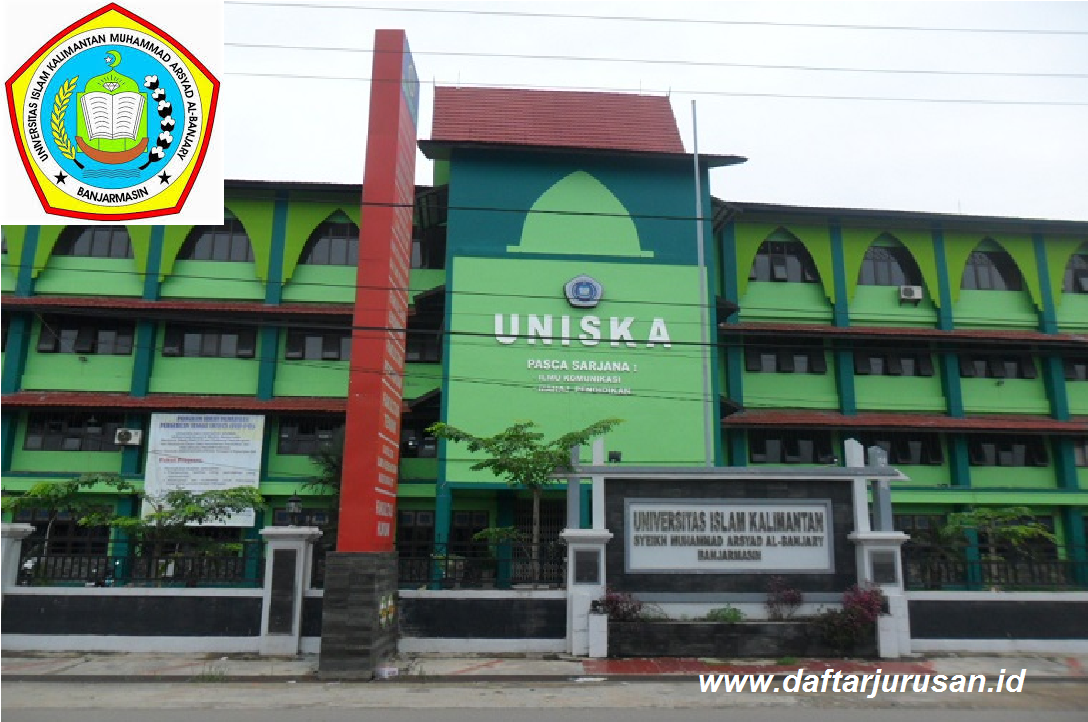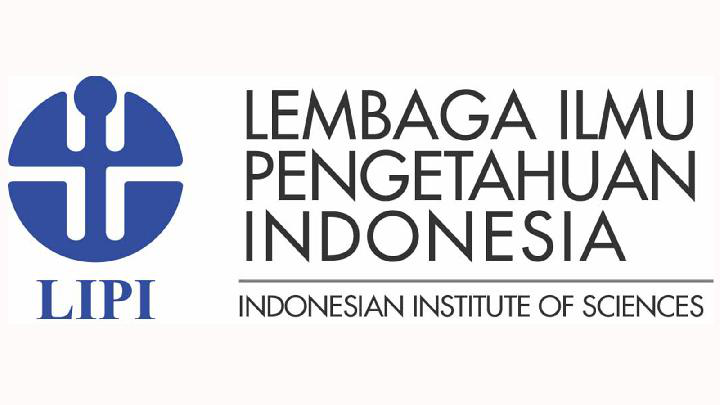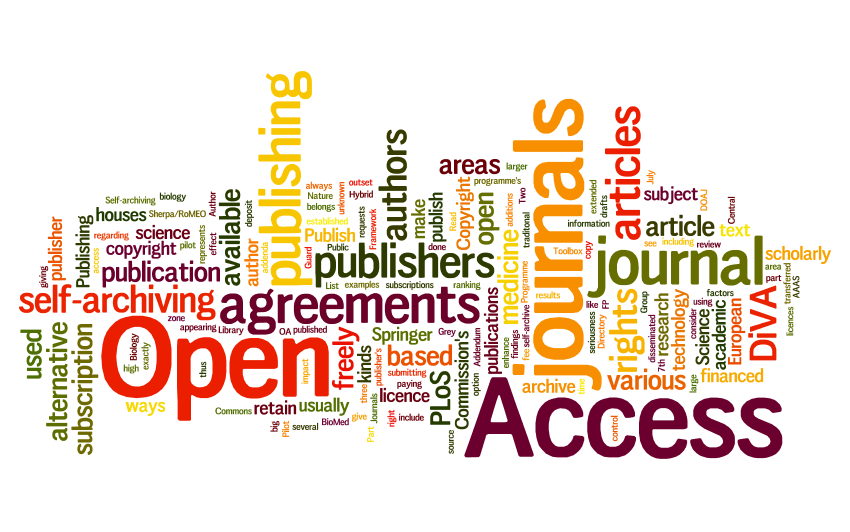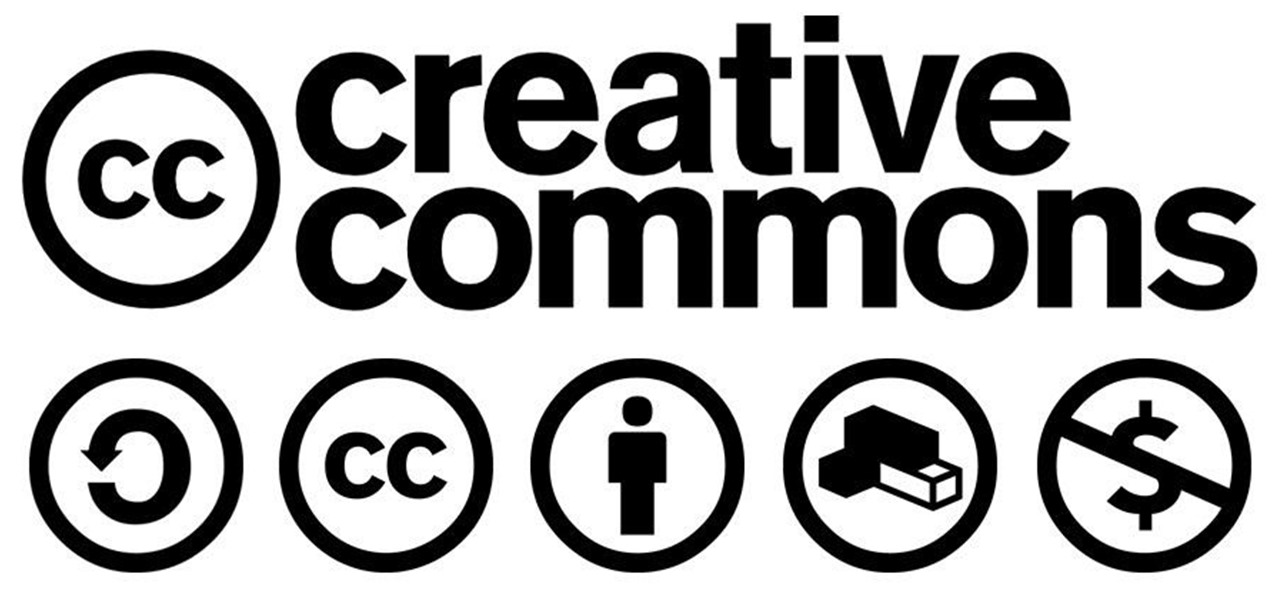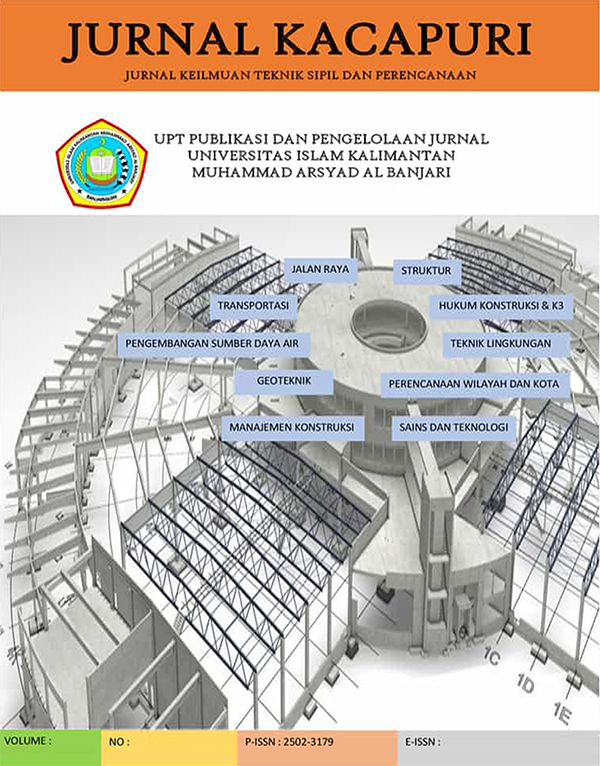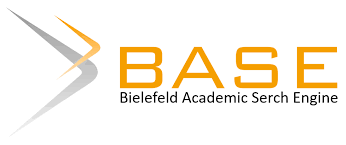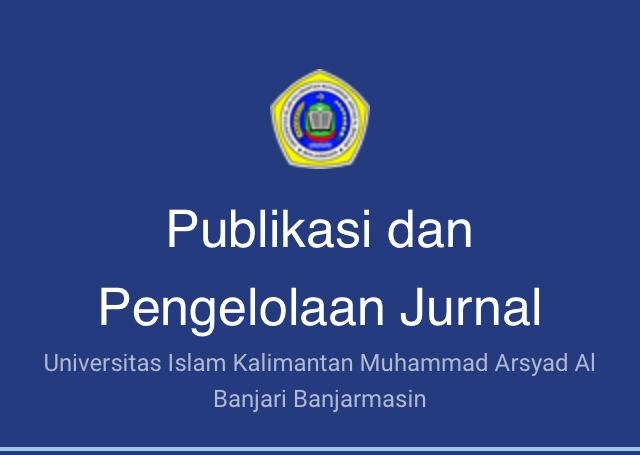PEMANFAATAN DAUR ULANG LIMBAH PLASTIK POLYETHYLENE TEREPHTHALATE (PET) SEBAGAI PENGGANTI AGREGAT KASAR PADA BETON
(1) Universitas Fajar, Makassar
(2) Universitas Fajar, Makassar
(3) Universitas Fajar, Makassar
(4) Universitas Fajar, Makassar
(5) Universitas Fajar, Makassar
(6) Universitas Bosowa, Makassar
(*) Corresponding Author
Sari
Sekarang ini material konstruksi beton diarahkan bersifat berkelanjutan dan ramah lingkungan. Banyaknya limbah plastik yang tidak terpakai dan merusak lingkungan. Daur ulang limbah plastik menjadi agregat merupakan salah satu upaya dalam membuat material yang ramah lingkungan. Tujuan penelitian ini adalah untuk mengetahui pengaruh agregat limbah plastik PET (Polyethylene Terephthalate) sebagai pengganti agregat kasar terhadap sifat fisik (slump test, bleeding, segregation, berat isi) dan sifat mekanik kuat tekan beton. Variasi penelitian menggunakan variasi persentase agregat limbah plastik PET (Poyethylene Terephthalate) pada campuran beton sebesar 0%, 25%, 50%,
75% dan 100% terhadap volume agregat kasar pada campuran beton. Penambahan persentase agregat limbah plastik PET (Poyethylene Terephthalate) berpengaruh sangat signifikan pada nilai kuat tekan beton, semakin tinggi persentase agregat limbah plasti PET (Poyethylene Terephthalate) maka semakin rendah nilai kuat tekan beton. Menurunnya nilai berat isi, kuat tekan sangat dipengaruhi oleh bertambahnya persentase agregat limbah plastik PET (Poyethylene Terephthalate) pada beton.
Kata Kunci: Poyethylene Terephthalate, Beton, Agregat Kasar, Kuat Tekan, Workability
Teks Lengkap:
PDFReferensi
ASTM C.125-1995:61 “Standard Defenition of Technolgi Relating to concrete and Concrete
Agregates, Annual Book of ASTM Standards, USA.
ASTM C29M-97. “ Examination Heavy Volume”, Annual Books of ASTM Standards, USA.
ASTM C566-97. “Examination Levels of Waters Content”. Annual Books of ASTM Standards,
USA.
ASTM C117-95. “Examination Levels of Mud”. Annual Books of ASTM Standards, USA.
ASTM C40-99.”Examination Levels of Organic”, Annual Books of ASTM standards, USA.
ASTM C40-99.”Examination Abrasion/Wear”, Annual Books of ASTM standards, USA.
ASTM C39/39M-12a, standard Test Method for Compressive Strength of Cylindrical Concrete
Specimens, October 2012.
Ahmad. IA et al. ‘Durability of Concrete Using Rice Husk Ash as Cement Substitution Exposed
To Acid Rain’, International Journal of Engineering Research and Applications, 4(5), (2014) pp.
–149.
Armidion, R dan Rahayu, T (2018) : Peningkatan Nilai Kuat Tarik Belah Beton Dengan Campuran
Limbah Botol Plastik Polyetylene Terephthalate (PET), Jurnal Konstruksia, Volume 10 Nomer
, Teknik Sipil Universitas Muhammadiyah Jakarta, Jakarta.
Al-tayeb, M.M., Daoor, I., and Zeyad, AM. “Effect of Partial Replacements of Coarse Aggregate by Polycarbonate Plastic Waste on the First Crack Impact Resistance of Concrete Beam”, Journal of Environment and Earth Science, March. 2020), doi: 10.7176/jees/10-2-06.
Das, S., Alam, MT., and Chowdhury, I. “Utilization of plastic Waste In Concrete as Partial Replacement of Fine Aggregate.” Proceedings of 3rd International Conference on Advances in Civil Engineering. Chittagog. Bangladesh, 2016
Dewi, U.S, dan Purnomo, R (2016) : Pengaruh Tambahan Limbah Plastik HDPE (high density polyethylene) Terhadap Kuat Tekan Beton Pada Mutu k.125, Jurnal, Tapak Vol. 6, Teknik Sipil Universitas Muhammadiyah Metro, Lampung.
Jibrael, MA. and Peter, F. “Strength and Behavior of Concrete Contains Waste Plastic”, Journal
of Ecosystem & Ecography, 6(2), 2016 pp. 4–7. DOI:10.4172/2157-7625.1000186.
Erniati dan M. Wihardi Tjaronge (2016) : Mikrostruktur Self Compacting Concrete, Penerbit
Leutika Prio, Yogyakarta.
Istimawan Dipohusodo, 1994, Struktur Beton Bertulang, berdasarkan SK SNI T-15-1991-03
Departemen Pekerjaan Umum RI , Jakarta , Gramedia Pustaka Utama.
Bachtiar. E. “Environmentally Friendly Material”. Faculty of Engineering, Fajar University &
Tohar Media, Makassar, 2019.
Bachtiar. E “The connection between oven curing duration and compressive strength on C-type fly ash based-Geopolymer mortar”, ARPN Journal of Engineering and Applied Sciences, 2020,
(5), pp. 1–6.
Basha S.I., M.R. Ali, S.U. Al-Dulaijan, M. Maslehuddin. “Mechanical and thermal properties of lightweight recycled plastic aggregate concrete”. Journal of Building Engineering 32 (2020)
DOI:10.1016/j.jobe.2020.101710
Erniati Bachtiar, Mustaaan et al (2020) Examining Polyethylene Terephthalate (PET) as Artificial Coarse Aggregates in Concrete, Civil Engineering Journal, Vol 6 No. 12, Desember 2020, DOI:10.28991/cej-2020-03091626
Ghernouti, Y. et al. ‘Use of Recycled Plastic Bag Waste In The Concrete’, Journal of International
Scientific Publications: Materials, Methods and Technologies, 2009 pp. 480–487
Kore, S.D. ‘Feasibility Study on Use of Plastic Waste as Fine Aggregate in Concrete Mixes’,
Journal of Building Material Science, 1(1), 2019, pp. 26–31. DOI:10.30564/jbmr.v1i1.1204
Manjunath, ABT. “Partial Replacement of E-plastic Waste as Coarse-Aggregate in Concrete”.
Procedia Environmental Sciences. 35 (20160. pp. 731–739. DOI:10.1016/j.proenv.2016.07.079
Mohammed, AS. et al. “Mechanical Properties of Concrete and Mortar Containing Low Density Polyethylene Waste Particles as Fine Aggregate.”. Journal of Materials and Engineering Structures, 7. February 2020 pp. 57–72.
Purnomo H., Pamudji, G., and M. Satim. “Influence of uncoated and coated plastic waste coarse aggregates to concrete compressive strength”. MATEC Web of Conferences, 101, 2017, DOI:
1051/matecconf/201710101016.
Raju Sharmaa, Prem Pal Bansal. Use of different forms of waste plastic in concrete – a review.
Journal of Cleaner Production. Volume 112, Part 1, Pages 473-482, 20 January 2016. DOI:10.1016/j.jclepro.2015.08.042
SNI 02-6820-2002 : Spesifikasi Agregat Halus, Badan Standarisasi Nasional, Departemen
Pekerjaan Umum, 2002.
SNI-03-2847-2002 : Spesifikasi Persyaratan Air dalam pasal 5.4 ayat 1 s/d 3, Badan Standarisasi
Nasional, Departemen Pekerjaan Umum, 2002.
SNI 15-7064-2004: Spesifikasi Agregat Halus, Badan Standarisasi Nasional, Departemen
Pekerjaan Umum, 2004.
SNI 03-3449-2002 : Mengenai Tata Cara Pembuatan Campuran Beton Ringan Dengan Agregat
Ringan, Departemen Pekerjaan Umum, 2002.
SNI 03-2847-2002 : Tata Cara Perhitungan Struktur Beton untuk Bangunan Gedung, Departemen
Pekerjaan Umum, 2002.
SNI 03-6468-2000. Tata Cara Perencanaan Campuran Tinggi degan Semen Portland dengan Abu
Terbang. Badan Standarisasi Nasional. Departemen Pekerjaan Umum, 2002.
Tri, Mulyono (2006) : Teknologi Beton, Penerbit ANDI, Yogyakarta.
Tjokrodimuljo, Kardiyono (2009): Teknologi Beton, Biro Penerbit Teknik Sipil Universitas
Wiswamitra K.A, Dewi S.M., Choiron M.A., Wibowo A. “The Effect of Adding Minerals on Plastic Aggregate to Lightweight”. Concrete IOP Conf. Ser.: Earth Environ. Sci. 506 012046 (2020)
Xuemiao Li, Tung-Chai Ling, Kim Hung Mo. “Functions and impacts of plastic/rubber wastes as
eco-friendly aggregate in concrete – A review”, Construction and Building Materials 240 (2020)
DOI:10.1016/j.conbuildmat.2019.117869
DOI: http://dx.doi.org/10.31602/jk.v3i2.4076
Refbacks
- Saat ini tidak ada refbacks.

This work is licensed under a Creative Commons Attribution 4.0 International License.



